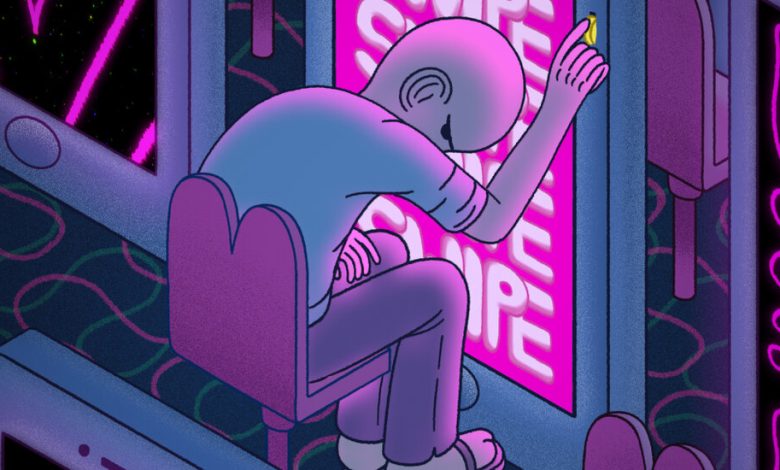It’s Not You: Dating Apps Are Getting Worse

“The golden age of dating apps is over,” a friend told me at a bar on Super Bowl Sunday. As we waited for our drinks, she and another friend swiped through Bumble and Hinge, hunting for new faces and likes. Across the bar were two young men: phones out, apps open, clearly doing the exact same thing. Never did the duos meet.
What’s lamentable here isn’t only that dating apps have become the de facto medium through which single people meet. Since 2019, three in 10 U.S. adults have reported using them, with that figure rising to roughly six in 10 for Americans under 50 who have never been married. Not only are people not meeting partners in bars or any of the once normal in-person venues — they’re barely meeting them on the apps, either.
Maybe most of us just aren’t as hot as we used to be. Maybe it’s time our inflated egos got knocked down a notch. Maybe the market of people still willing to put themselves out there in an attempt to date has gotten smaller. Or maybe the apps have functionally, intentionally gotten worse, as have our romantic prospects. The more they fail to help us form relationships, the more we’re forced to keep swiping — and paying.
The internet, where so many of us spend so much of our time, has not been spared from the decline in quality that seems to plague so much of consumer life. This phenomenon was described by the writer Cory Doctorow in a November 2022 blog post and is sometimes called “platform decay”: Tech platforms like Amazon, Reddit and X have declined in quality as they’ve expanded. These sites initially hooked consumers by being almost too good to be true, attempting to become essential one-stop shops within their respective spaces while often charging nothing, thanks to low interest rates and free-flowing venture capital funding. Now that we’re all locked in and that capital has dried up, those initial hooks have been walked back — and there’s nowhere else to go.
This is precisely what is happening with dating apps now, too, with much more urgent consequences. What’s worsening isn’t just the technological experience of online dating but also our ability to form meaningful, lasting connections offline.
The collapse of dating apps’ usability can be blamed on the paid subscription model and the near-monopoly these apps have over the dating world. While dozens of sites exist, most 20-something daters use the big three: Tinder, Hinge and Bumble. (Older people often gravitate toward Match.com or eHarmony.) All three sites offer a “premium” version users must pay for — according to a study conducted by Morgan Stanley, around a quarter of people on dating apps use these services, averaging out at under $20 a month. The purpose, many believe, is to keep them as paid users for as long as possible. Even if we hate it, even if it’s a cycle of diminishing returns, there is no real alternative.
